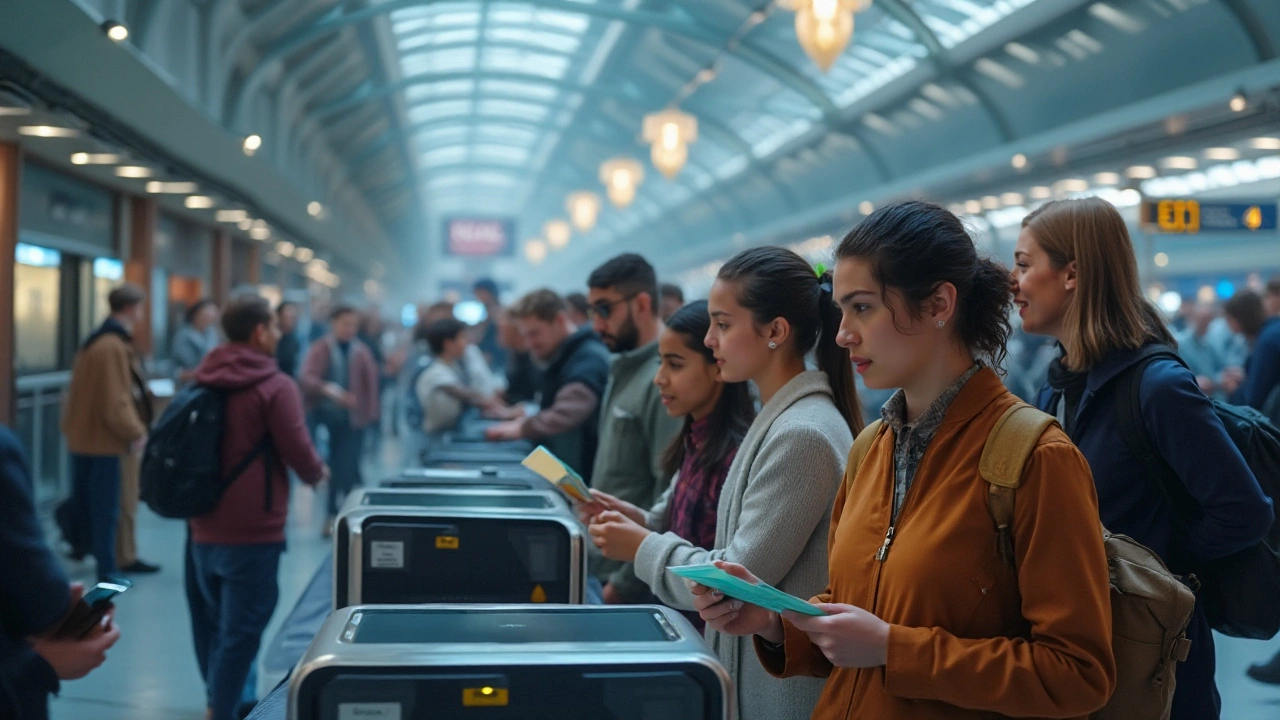Domestic Travel Tips for HGV Drivers
Driving a big rig around the UK can feel like a puzzle, especially when you’re juggling tight deadlines, traffic, and fatigue. The good news? A few simple habits can turn a stressful day into a smooth journey. Below are the basics you need to keep your trips safe, legal, and less tiring.
Plan Your Route Like a Pro
Before you even start the engine, pull up a reliable route planner that shows HGV‑friendly roads. Look for low bridges, weight limits, and any temporary roadworks. Apps like Google Maps let you filter for trucks, but also double‑check with the Highways Agency’s online maps.
Write down the main stops you’ll need – fuel stations, rest areas, and loading bays. Having a clear list helps you avoid last‑minute U‑turns that waste time and fuel.
Take Smart Breaks and Stay Fresh
UK law says drivers need a 45‑minute break after four hours of driving. Use that time to stretch, hydrate, and have a light snack. A quick walk around a service station can boost circulation and keep you alert.
When you choose a rest area, look for facilities with good lighting, secure parking, and, if possible, a quiet spot to nap. Even a 15‑minute power nap can reset your focus and reduce the chance of a microsleep.
Stay hydrated but limit caffeine after the first break – too much can lead to a crash later on. A bottle of water and a piece of fruit are enough to keep energy steady.
Another tip is to rotate seats if you’re driving with a co‑driver. Switching places every couple of hours spreads the fatigue load and gives both of you a fresh perspective on the road.
Fuel Efficiency Made Easy
Fuel is a big expense for any HGV fleet. Keep your speed around 55‑60 mph on motorways; that’s the sweet spot for fuel consumption. Avoid rapid acceleration and heavy braking – smooth inputs mean the engine uses less fuel.
Check tyre pressure weekly. Under‑inflated tyres increase rolling resistance and can add up to 10 % to fuel usage. A quick visual check or a portable gauge takes less than a minute.
Lastly, plan fuel stops so you never run low. Running out of fuel on a busy A‑road can cause dangerous slowdowns and cost extra time.
Stay Legal and Safe
Carry all required documents: licence, tachograph sheets, and vehicle registration. A missing paper can lead to a fine and a delay that ripples through your schedule.
Pay attention to speed limits specific to HGVs – they’re often lower than cars on the same road. Use your speed governor if you have one, and set the dial to the legal limit for the road type you’re on.
Watch out for blind spots at junctions. Make it a habit to check mirrors and perform a quick shoulder check before pulling out or merging.
Keep Your Mind Calm
Driving anxiety isn’t rare, especially on long domestic trips. If you feel nerves building, pull into a safe area, take a few deep breaths, and remind yourself of the preparation you’ve done.
Listening to a calming playlist or an audiobook can keep your mind occupied without distracting you. Avoid heavy news or drama that could spike stress levels.
Remember, a confident driver is a safe driver. Trust the planning you did, follow the road rules, and give yourself permission to take breaks when needed.
With these habits in place, your domestic travel will feel less like a chore and more like a routine you’ve mastered. Safe travels!
- November 28 2024
- 0 Comments
- Rowan Cavendish
Understanding REAL ID Requirements for US Domestic Flights in 2025
With May 2025 approaching, understanding the REAL ID's role for US domestic flights is crucial for travelers. Initially introduced to enhance security, the REAL ID Act mandates specific requirements for identification used for flying. This article explores the essentials of obtaining a REAL ID and its necessity for boarding flights in the US. Find out what this means for travelers and how to prepare for this change.
- Driving Lessons (41)
- HGV Training (31)
- Driving Test Tips (31)
- Driving Test Booking (26)
- Driving Licence Renewal (23)
- Driving Theory Test (21)
- Intensive Driving Course (16)
- Pass Plus Course (15)
- Driving Tips (15)
- Driver Licensing (14)
Categories
- December 2025 (13)
- November 2025 (13)
- October 2025 (21)
- September 2025 (5)
- August 2025 (8)
- July 2025 (30)
- June 2025 (30)
- May 2025 (30)
- April 2025 (31)
- March 2025 (30)
- February 2025 (28)
- January 2025 (34)
Archives
- driving lessons
- driving test
- driving tips
- intensive driving course
- driving test tips
- HGV training
- learn to drive
- driving theory test
- driver training
- driving test booking
- pass driving test
- HGV driving
- road safety
- driving license renewal
- Virginia driving test
- learner drivers
- safe driving
- Virginia driver's license
- driving license
- learning to drive

